چاریز
استودیو معماران مادو (مازیار دولتآبادی)
موقعیت: یزد، ایران
تاریخ: ۱۴۰۱
مساحت: ۴۰،۰۰۰ مترمربع
وضعیت: طرح پیشنهادی مسابقه معماری مجتمع گردشگری کاریزبوم یزد
کارفرما: شرکت پردیس کیان مهر کویر
طراح ارشد: دنیز ابراهیمی آذر
طراح مسئول: رضا ولینژاد
طراحی داخلی و رندرینگ: دنیا یوسفی
اولین سوالی که در آغاز پروژه برای ما مطرح شد، این بود که چگونه میتوان یک پروژه اجتماعی با رویکرد گردشی/تفریحی و برای زندگی شبانه، مطابق نیاز حال و آینده و نیز با احترام به گذشته، در یزد طراحی کرد؟ خود این مسئله چند موضوع مهم به دنبال داشت:
۱. پروژه اجتماعی چیست؟
۲. چگونه میتوان به نیازهای روز و آینده پاسخ داد؟
۳. رابطه معماری ما با گذشته درخشان یزد به چه صورت خواهد بود؟
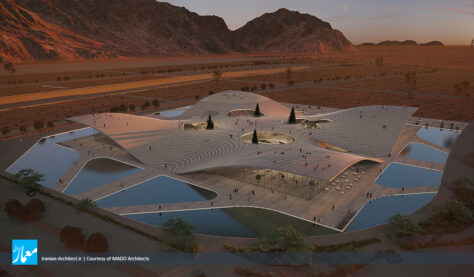
سوال دوم تیم طراحی به خلاء دو موضوع بسیار مهم در اندامهای اجتماعی/تاریخی یزد معطوف شد، یعنی حضور زنان و زندگی شبانه. از آنجا که در گذشته، اغلب اندامهای تاریخی مانند بازار، مساجد و … فاقد حضور زنان و زندگی شبانه بودهاند، ما به عنوان معمار چگونه میتوانیم این فقدان را در یک پروژه اجتماعی/فرهنگی به حداقل برسانیم؟
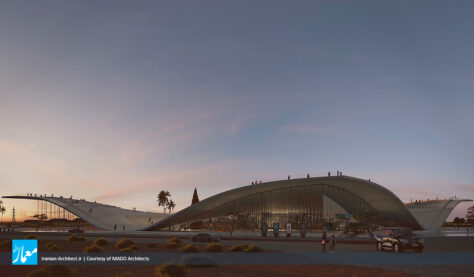
سوال سوم این بود که با توجه به شرایط اجتماعی/سیاسی حاکم بر ایران امروز، موضع یک معمار چه باید باشد؟ قبول وضع موجود و بازنمایی آن، یا اینکه میتوان از طریق طراحی، وضع موجود اجتماعی/سیاسی را نقد و به چالش کشید و به یک آلترناتیو جدید برای ایجاد آزادی در پروژه اجتماعی فکر کرد، یک فضای دموکرات با درونمایه آزادی برای تمام انسانها و تمام قومیتها، بدون نگاه جنسیتی؟
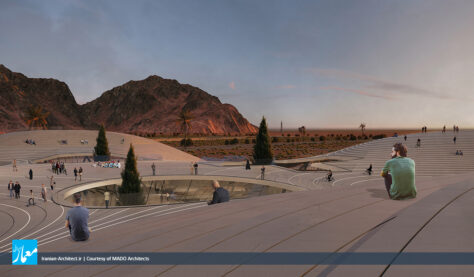
پس از بررسی مسائل اصلی پروژه، با توجه به جایگاه زنان در شرایط کنونی کشور و نیز در راستای احیاء هویت ایرانی، هنر فرشبافی به عنوان پنداره پروژه انتخاب شد، چرا که فرش ایرانی یک اثر هنری زنانه و حاصل تلاش زنان گذشته سرزمین ایران است که در همهجای دنیا به عنوان نماد هویت ایرانی شناخته میشود. مفهوم دیگری که در پروژه بهکار گرفته شد، مفهوم Social Condenser یا همان چگالنده اجتماعی بود، مفهومی که در دهه دوم قرن بیستم، توسط آوانگاردهای روسی ASNOVA و OSA در جهت ایجاد یک پلتفرم آزاد و بدون مرزبندیهای رایج، برای خلق و همافزایی برنامههای جدید مطرح شد، و در دهه ۱۹۸۰، مجددا توسط رم کولهاس مورد استفاده قرار گرفت. در نهایت، سنتز این دو مفهوم، یعنی چگالنده اجتماعی و فرش به عنوان یک اثر هنری زنانه، ایده پروژه را شکل داد: «چاریز به مثابه یک چگالنده فرهنگی».
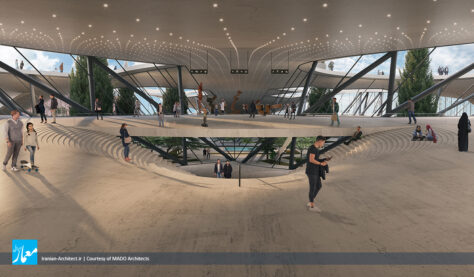
دیاگرام اولیه پروژه از پهنکردن یک فرش ایرانی روی شهر یزد شکل گرفت که فرم این فرش مشابه آثار کریستو و ژان کلود، از فرم اندامهای اجتماعی/فرهنگی شاخص شهر یزد تاثیر میگیرد. حاصل این کار، خلق یک پوسته (ساختار پلتفرمی) سیال و شکلپذیر بود که چهار وید بزرگ (فضای خالی) به احترام زنان ایرانی و به نشان عدم حضور آنها در جامعه و اندامهای اجتماعی گذشته، و نیز با هدف بازنمایی حیاطمرکزیهای یزد، از درون آن کم شدهاند. هر یک از این ویدها نماد یکی از اندامهای اجتماعی گذشته یزد هستند: دایره، نماد گنبد مسجد جامع یزد؛ ششضلعی، نماد بادگیر باغ دولتآباد یزد؛ چلیپا، نماد چهارسوق بازار خان یزد؛ و مربع، نماد حیاطمرکزی خانههای یزد. این چهار وید بزرگ بهصورت اریب، به سمت مرکز پروژه جهت میگیرند و در نهایت، در تراز منفییک به یکدیگر میرسند تا به شکلی یکپارچه و منسجم، درون پروژه را نشان دهند. درون این فضای یکپارچه که از تمامی زوایای پروژه قابل رویت و نیز در ارتباط با فضای آزاد است، مدرسه طبیعت و منظر پروژه تعریف شده است که در مرکز آن یک حوض کلاسیک مربعشکل به یاد حیاطهای قدیمی اندامهای تاریخی یزد قرار دارد.
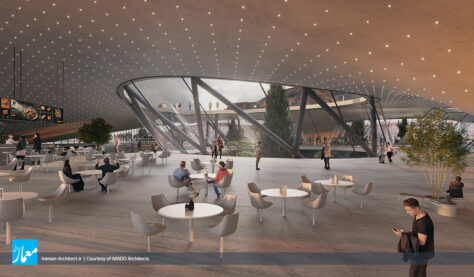
تصمیم تیم طراحی برای احترام به خط آسمان شهر یزد و محیط اطراف این بود که پروژه نباید مرتفع باشد، به همین دلیل، بالاترین قسمت پوسته دارای نصف ارتفاع ممکن، یعنی ۱۲ متر از ۲۴ متر مجاز است. همچنین به منظور امکانپذیری ساخت و کاهش پیچیدگی رفتار پوسته توپولوژیک و سیال پروژه، با الهام از هندسه چهارطاقی به عنوان یکی از کهنالگوهای معماری ایرانی، چهار محور متقارن روی پوسته انداخته شد که در ابتدا نقاط تلاقیشان بهصورت یک قوس نرم تا ارتفاع ۱۲ متر بالا رفتند، و سپس این پوسته برعکس شد؛ حاصل این کار، تعریف چهار محور متعامد در قطرهای پوسته برای ورود به پروژه، و نیز آزادشدن چهار محور متعامد برای دسترسی به روی پوسته بود که تمام رویدادهای اجتماعی را بهصورت شبانهروز در خود جای میدهد. بدینترتیب، بالاترین سطح نفوذپذیری از چهار طرف زمین به روی پوسته و زیر پوسته ایجاد شد. در ادامه نیز قرینه پوسته روی زمین در زیر زمین شکل گرفت که این دو پوسته در پایینترین و بالاترین نقاطشان بر هم مماس میشوند. حاصل این کار، از بین رفتن تعریف کلاسیک طبقه و خلق یک تجربه شگفتانگیز فضایی است که در آن ترازهای پروژه بهصورت سیال به یکدیگر تبدیل میشوند.
Chariz
MADO Architects (Maziar Dolatabadi)
Location: Yazd, Iran
Date: 2023
Area: 40,000 sqm
Status: Competition Proposal of Yazd Karizboom Tourism Complex
Client: Pardis Kian Mehr Kavir Company
Lead Architect: Deniz Ebrahimi Azar
Architect in Charge: Reza Valinejad
Interior Design & Rendering: Donya Yousefi
The first question that was raised for us in the project, was how to design a social project with the context that lived in the surrounding environment. This led to several important issues:
1. What is a social project?
2. How to respond to present and future needs?
3. How to connect to Yazd vernacular architecture?
The second question of the design team focused on lack of two important issues: First one, lack of women in the past social projects of Yazd, and second one, lack of the night life in Yazd. How can we as an architect, minimize this absence in a social/cultural project?
The third question was that what is the position of an architect, according to the social/political conditions prevailing in Iran? Is it to accept the existing status and represent it, or could criticize and challenge the social/political status through design and think of a new alternative to create freedom in the social project, a democratic space with the theme of freedom for all people and all ethnicities without gender perspective.
After reviewing the main issues of the project, considering the position of women in the current social conditions of the Iran, and through with the revival of Iranian identity, the art of carpet weaving was chosen as the notion of the project. Iranian carpet is a feme art and the result of the efforts of the past women’s community of Iran, which is known all over the world, as a symbol of Iranian identity. Another concept that was used in this project, was the concept of “Social Condenser”, a concept that was proposed in the second decade of the 20th century, by the Russian avant-gardes ASNOVA and OSA, in order to create a free platform without common boundaries, for creating and synergizing new programs. The synthesis of these two concepts, that is, the social condenser and the carpet as a feminine work of art, formed the idea of the project: “Chariz as a cultural condenser”.
The initial diagram of the project was formed by spreading an Iranian carpet over the city of Yazd; Like the works of Christo and Jeanne-Claude, the form of this carpet is influenced by the form of socio-cultural buildings of Yazd. The result of this work was the creation of a fluid and topological surface (free platform). In the following, the four large voids (empty spaces) were reduced from the surface out, to respect the Iranian women and as a index of their absence in the social buildings of the past and society, as well as in order to respect and represent Yazd Figure/Ground. These voids, each of them represents one of the social buildings of the Yazd’s past: circle, symbol of the dome of Yazd Great Mosque; hexagon, symbol of Dowlatabad Garden’s windmill; cruciform, symbol of Khan Bazaar’s Chahar-Souq; and square, symbol of common central courtyards inside houses. The voids are directed obliquely towards the center of the project, and finally, they meet each other in the lower level to create one single super void and show a unified and coherent form as a sign of unity within the project. Within this integrated space, which can be seen from all angles of the project, and is connected with the open space, the project’s nature and landscape school has been defined, and a classic square-shaped pond is in the center of this space, to represent of the old courtyards of the historical buildings of Yazd.
The decision of the design team to respect the skyline of Yazd city and the surrounding environment was that the project should not be tall; For this reason, the highest part of the surface has half the possible height, i.e. 12 meters out of 24 meters. In order to increase the construction feasibility, and reduce the complexity of this topological and fluid surface’s behavior, four symmetrical axes were placed on the surface, inspired by the Chahar-Taq geometry, as one of the archetypes of Iranian architecture. At first, their intersection points rose up to a height of 12 meters to form an arc; Then, this surface was reversed. The result of this work was the definition of four orthogonal axes in the diameters of the surface to enter the project, as well as the release of four orthogonal axes to access the surface, which accommodates all social events day and night. Thus, the highest level of accessibility was created from the four sides to the surface and under the surface. In the following, the similar surface on the earth was mirrored under the earth, and these two surfaces are tangent at the points which are their lowest and highest point. The result of this work is the loss of the classical definition of the floor, and the creation of an amazing spatial experience in which the project levels are fluidly transformed into each other.

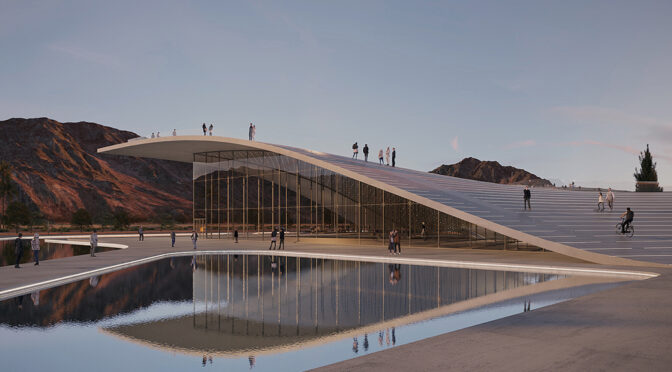
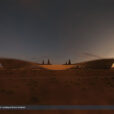
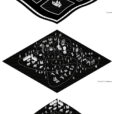
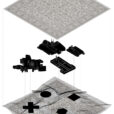
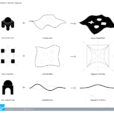
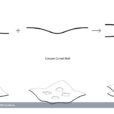
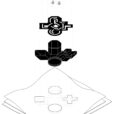
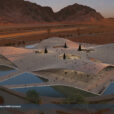
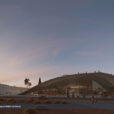
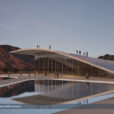
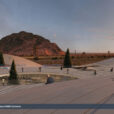
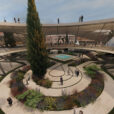
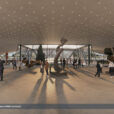
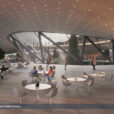
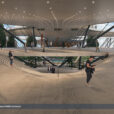
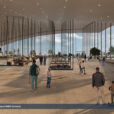
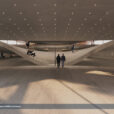

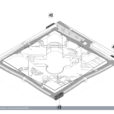
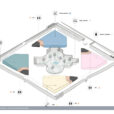
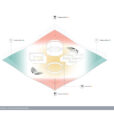
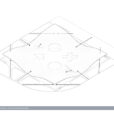
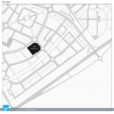
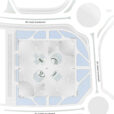
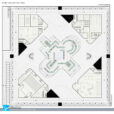
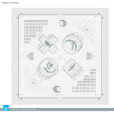
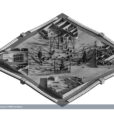
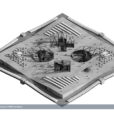
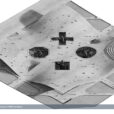
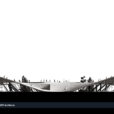
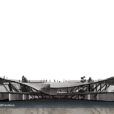
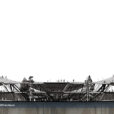
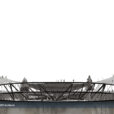
عالی